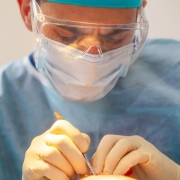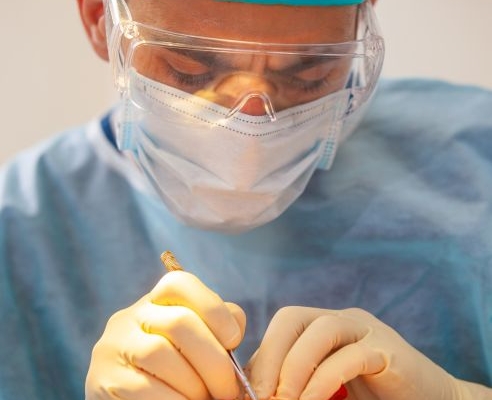Who Can Benefit From Scalp Micropigmentation?
 Scalp Micropigmentation (SMP) is an out-patient cosmetic solution for hair loss and thinning hair that is a semi-permanent solution for men and women who are experiencing thinning hair and the beginning stages of balding.
Scalp Micropigmentation (SMP) is an out-patient cosmetic solution for hair loss and thinning hair that is a semi-permanent solution for men and women who are experiencing thinning hair and the beginning stages of balding.
For men, scalp micropigmentation treatment for hair loss involves careful matching with the patient’s own hair to replicate the appearance of shaven hair. This is accomplished by carefully adding thousands of randomly placed micro-pigmentation “dots” to the patient’s scalp. The ultimate effect is to hide or mask the effects of thinning hair and balding and exactly replicate the appearance of a full head of hair, shaved closely.
SMP Scalp Micropigmentation can also be used very effectively to mask old, unsightly hair transplant scars resulting from FUT or “strip method” hair transplants, thereby allowing patients who have had FUT hair transplants in the past to now be able to style their hair in modern, short hairstyles.
Women experiencing thinning hair also find Scalp Micropigmentation helpful in adding contrast and the appearance of fullness to thinning hair areas, allow them to go about their daily lives with added confidence in the look of their hair.
Related: What is the Difference Between Scalp Micropigmentation & Hair Tattoos?
Scalp Micropigmentation (SMP) and You
Scalp Micropigmentation (SMP) can be helpful for men and women who are suffering from thinning hair and balding and are experiencing any of the following:
- Beginning to notice hair loss (Norwood 1-3)
- Are suffering from various forms of Alopecia
- Are beginning to notice a receding hairline
- Are beginning to notice pronounced hair thinning in the crown and top areas of their scalp
- Have scars from previous hair transplant procedures or scarring from trauma
- Men and women desiring a more pronounced or defined hair line
With scalp micropigmentation, you can say goodbye to messy, runny hair fibers or “spray on hair.” SMP is a long-lasting, natural looking solution for the appearance of thinning hair and more pronounced hair loss. It will not wash off and requires only the most minimal periodic touch up, typically at 3-6 year intervals. And since it is permanent, going to the gym or jogging is no longer a worry, since normal sweating has no effect on it.
Scalp micropigmentation is a simple, comfortable outpatient procedure typically lasting 2-3 hours. There is virtually no down time and is perfect for those wanting the appearance of a full head of hair.
Should I Consider Scalp Micropigmenation?
SMP can be an effective way to replicate a more youthful look, letting you feel more confident in your appearance in both career and personal settings. A low maintenance procedure, scalp micropigmentation is typically completed in 2-3 sessions for a period of 5-6 weeks.



 NeoGraft surgical hair transplants, a surprisingly quick hair-restoration process
NeoGraft surgical hair transplants, a surprisingly quick hair-restoration process

